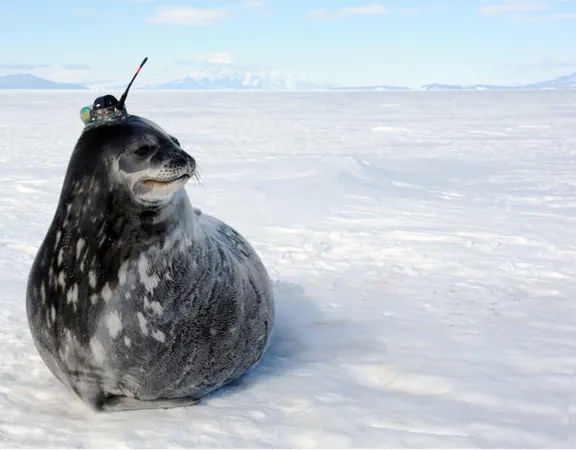
Unveiling the Hidden Hunting Tactics of Weddell Seals: How They Outsmart Their Prey
2024-11-01
Author: Sarah
Introduction
Researchers have made exciting discoveries about the world’s southernmost mammal, the Weddell seal, showcasing their remarkable hunting strategies that are adapted to an ever-changing Antarctic environment.
Physical Characteristics and Population
Found predominantly in Antarctica's Erebus Bay, these massive seals can weigh up to 1,320 pounds—about four times the weight of a giant panda. They measure between eight to 11 feet in length, making them larger than a grand piano. With an estimated population of around 300,000 mature individuals, measuring their numbers accurately has proven challenging. Weddell seals boast an impressive lifespan of up to 30 years, but they are not without their adversaries; orcas and larger leopard seals are among their natural predators.
Diet and Diving Abilities
The diet of Weddell seals primarily consists of fish, squid, and other smaller prey. They exhibit impressive diving capabilities, reaching depths of over 2,952 feet, and can hold their breath for more than an hour and a half while foraging underwater.
Unique Hunting Strategies
Recent research led by scientists at the Woods Hole Oceanographic Institution has unveiled that Weddell seals employ a unique strategy in their hunting habits. They execute their most extreme and deepest dives in the early hours of the day, strategically preceding the peak feeding times that occur in the midday. According to Michelle Shero, an assistant scientist at WHOI, this cunning approach allows them to hunt effectively under optimal lighting conditions. 'By diving deep when the light is less intense, they maximize their chances to see and catch prey,' Shero stated.
Timing and Recovery
This timing is crucial; the dives' extreme nature necessitates considerable recovery time at the surface. If the seals ventured on arduous dives during peak daylight hours—despite abundant prey visibility—they would likely miss foraging opportunities due to necessary recuperation.
Research Methodology
The researchers tracked the seals' diving behavior by equipping them with antenna-like loggers, gathering 8,913 days' worth of data from 59 adult seals. These loggers, attached with a special epoxy, naturally detach during the seals' annual molting process.
Publication and Insights
Published in the journal Communications Biology, this research highlighted striking insights into animal behavior, indicating that Weddell seals not only adjust their diving patterns based on current light levels but also plan their activities with impressive foresight. 'The Weddell seals seem to be strategizing not only when to forage but also when to rest,' noted co-author Jennifer Burns, professor at Texas Tech University.
Impact of Climate Change
Given the increasing impacts of climate change, particularly in the western Ross Sea of Antarctica—where the seals swim—these findings emphasize the profound adaptability of Weddell seals in a rapidly warming world.
Conclusion
As research continues to unfold, it remains crucial to understand how these fascinating creatures are evolving and responding to the changing dynamics of their habitat. The Weddell seals’ meticulous planning offers a glimpse into the intricate lives of marine mammals navigating the complexities of survival in one of Earth’s harshest environments.


 Brasil (PT)
Brasil (PT)
 Canada (EN)
Canada (EN)
 Chile (ES)
Chile (ES)
 España (ES)
España (ES)
 France (FR)
France (FR)
 Hong Kong (EN)
Hong Kong (EN)
 Italia (IT)
Italia (IT)
 日本 (JA)
日本 (JA)
 Magyarország (HU)
Magyarország (HU)
 Norge (NO)
Norge (NO)
 Polska (PL)
Polska (PL)
 Schweiz (DE)
Schweiz (DE)
 Singapore (EN)
Singapore (EN)
 Sverige (SV)
Sverige (SV)
 Suomi (FI)
Suomi (FI)
 Türkiye (TR)
Türkiye (TR)